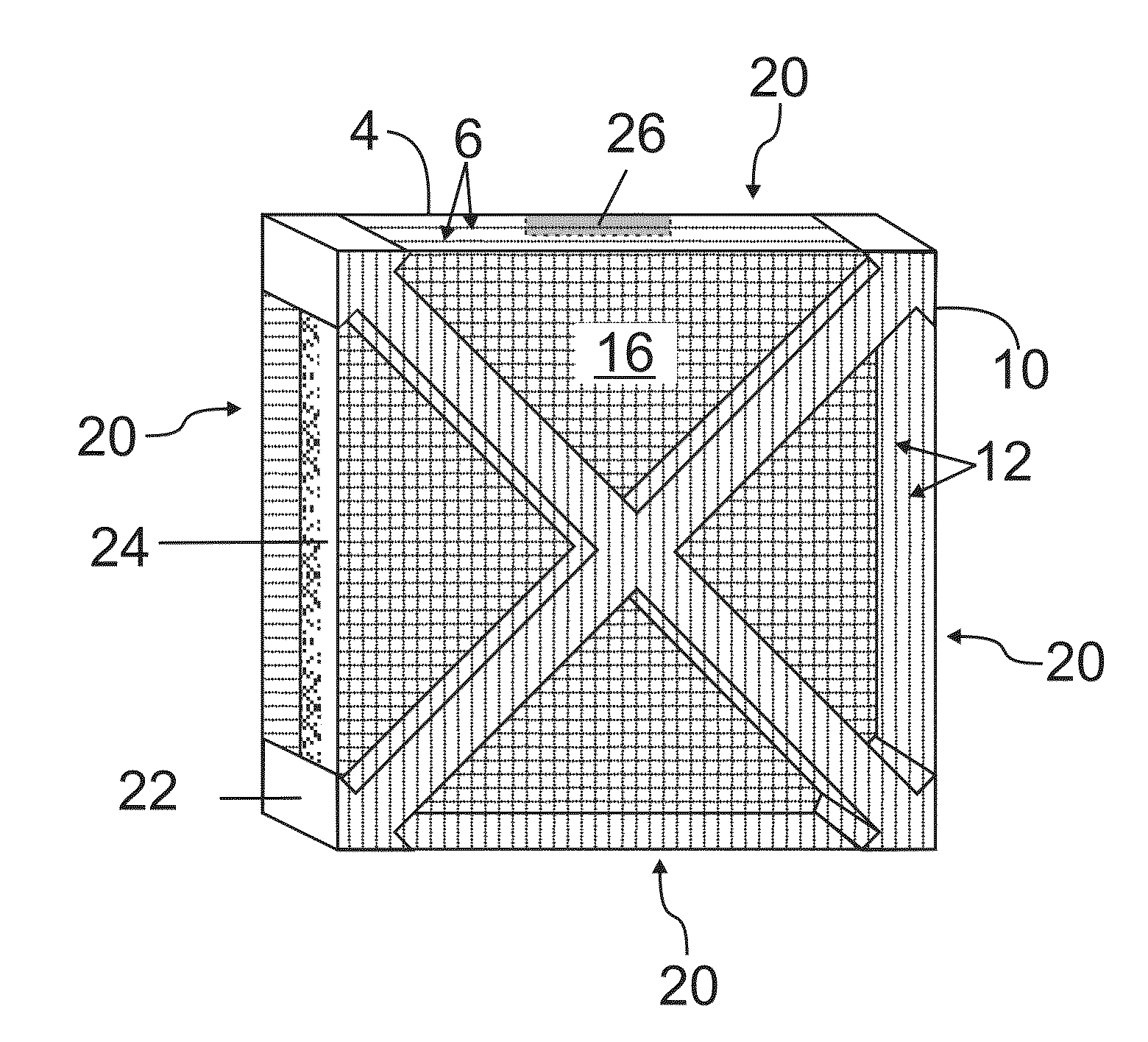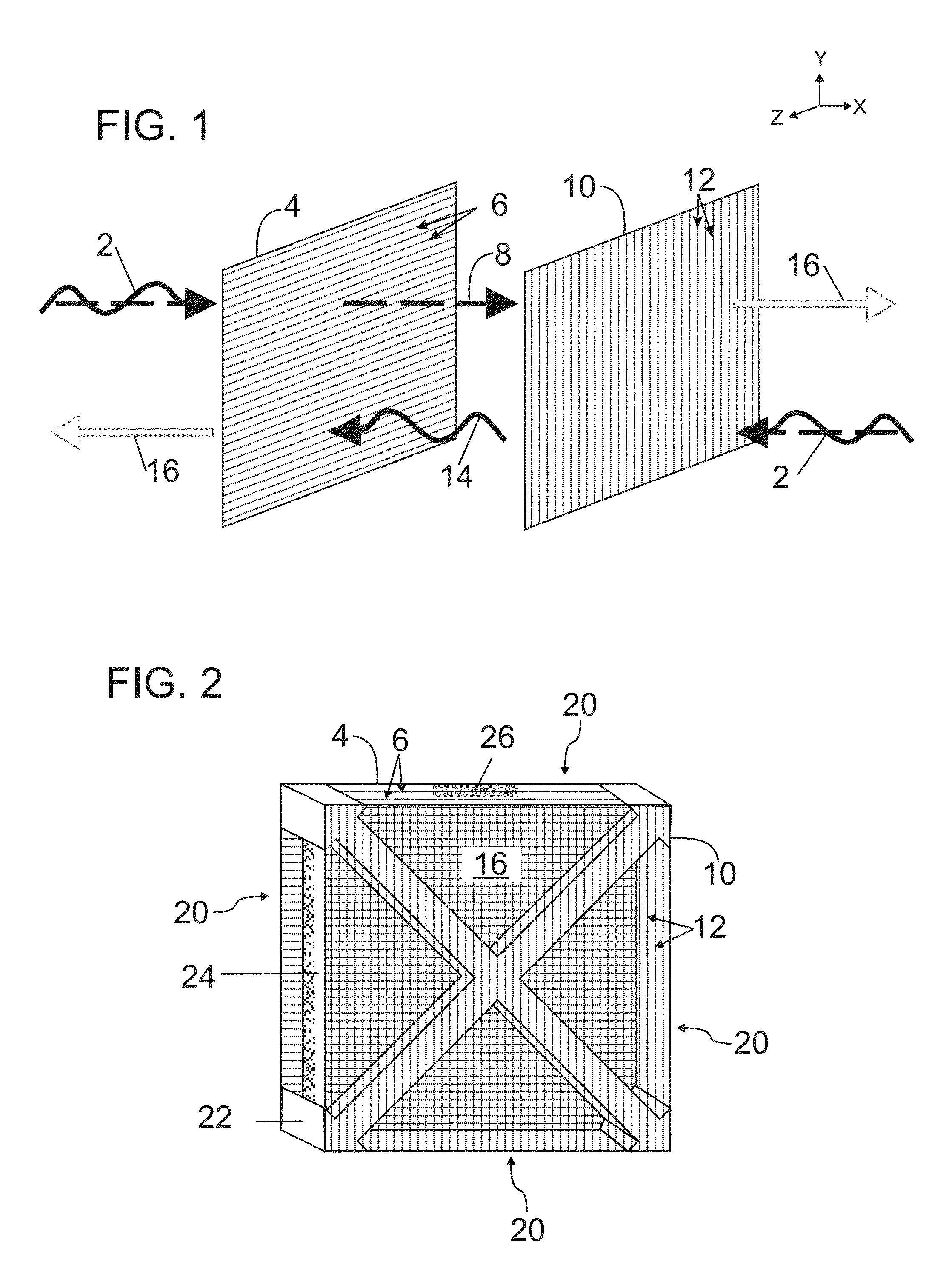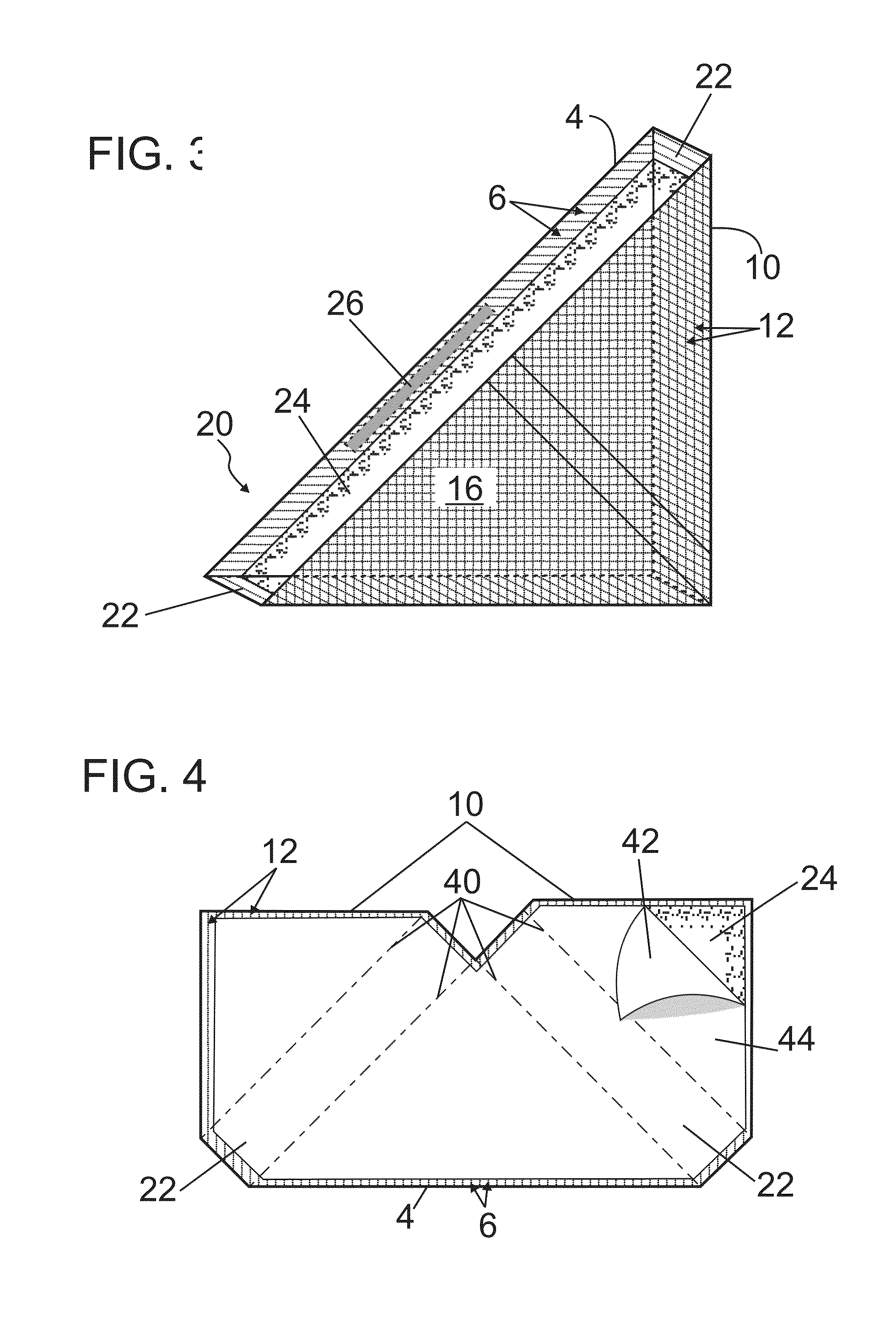Insect Trap
a technology for insects and traps, applied in the field of insects traps, can solve the problems of obscuring the view of trapped insects inside to a casual human observer, and achieve the effects of convenient storage and transportation, simple use, and convenient manufactur
- Summary
- Abstract
- Description
- Claims
- Application Information
AI Technical Summary
Benefits of technology
Problems solved by technology
Method used
Image
Examples
example i
[0024]Prototypes of the embodiment depicted in FIG. 3 were compared to a commercially available trap of similar shape (Fly Motel® Window Trap, Black Flag Brands LLC, New York Mills, N.Y.; also described in Acevedo U.S. Pat. No. 5,649,385) in a replicated cage bioassay. Two traps of each type were placed in a 25 cm wide×25 cm high×75 cm long acrylic box with a screen on one end. All traps were secured in a bottom corner of a long wall, with the trap opening facing towards the center of the box. Similar traps were placed in opposing corners to minimize possible positional effects due to minor variations in external light. Two replicate cages were set up. Approximately 75 flies (Musca domestica, Rincon-Vitova Insectaries, Ventura, Calif.), 1-2 days old and mixed sexes, were released into each cage every day for three days. Traps were not rotated between positions. A single count of flies captured in each trap was performed 24 hours after the final release. Approximately 5% of flies wer...
example ii
[0026]Prototypes of the embodiment depicted in FIG. 2 were compared to a commercially available trap of similar shape (Fly Motel® Window Trap, Black Flag Brands LLC, New York Mills, N.Y.; also known as the trap of Acevedo, U.S. Pat. No. 5,649,385) in a replicated cage bioassay. Two traps of each type were placed in a 25 cm wide×25 cm high×75 cm long acrylic box with a screen on one end. All traps were secured in a bottom corner of a long wall. Similar traps were placed in opposing corners to minimize possible positional effects due to minor variations in external light. Two replicate cages were set up. Approximately 40 flies (Musca domestica, Rincon-Vitova Insectaries, Ventura, Calif.), 1-2 days old and mixed sexes, were released into each cage every day for four days. The number of flies caught in each trap was counted daily before releasing the next set. Traps were rotated between positions daily to compensate for the positional effects observed previously. Approximately 12% of fl...
PUM
 Login to View More
Login to View More Abstract
Description
Claims
Application Information
 Login to View More
Login to View More - R&D
- Intellectual Property
- Life Sciences
- Materials
- Tech Scout
- Unparalleled Data Quality
- Higher Quality Content
- 60% Fewer Hallucinations
Browse by: Latest US Patents, China's latest patents, Technical Efficacy Thesaurus, Application Domain, Technology Topic, Popular Technical Reports.
© 2025 PatSnap. All rights reserved.Legal|Privacy policy|Modern Slavery Act Transparency Statement|Sitemap|About US| Contact US: help@patsnap.com



